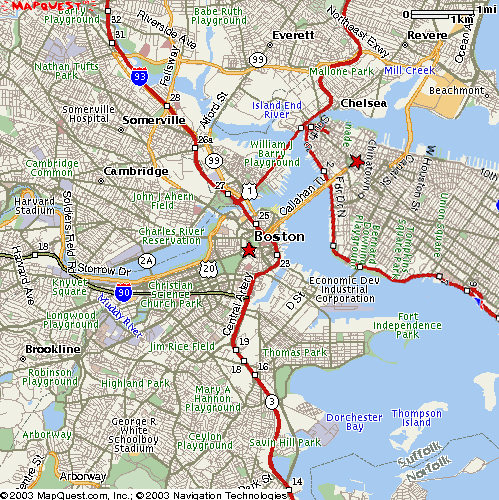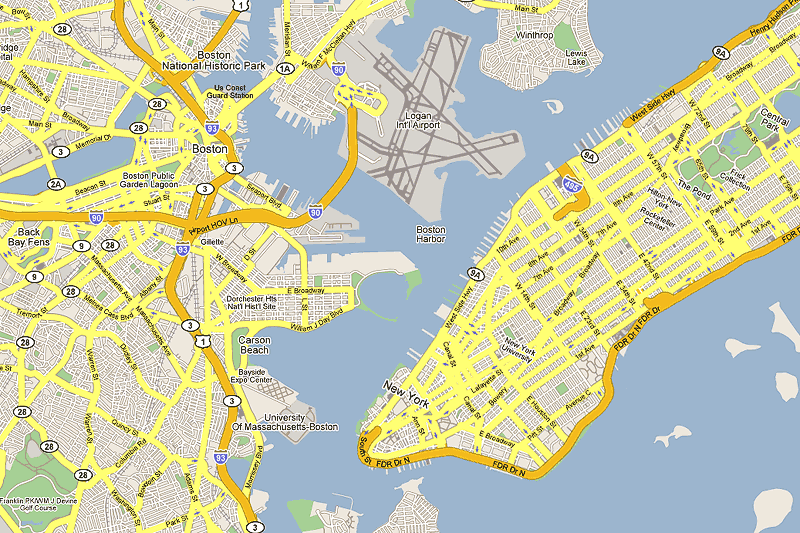So, New York City government is proposing turning 34th Street into a bus transitway.
Details from Streetsblog New York City. Click through to see the renderings and read the comments left by some really smart people.
DOT Plans to Bring NYC?s First Separated Busway to 34th Street
by Noah Kazis on March 2, 2010
When DOT Commissioner Janette Sadik-Khan hinted last Tuesday that bolder ideas were on the way for bus rapid transit in New York City, she apparently meant "next week." The DOT website now displays an updated plan for the next phase of bus improvements on 34th Street, which would convert the current bus lanes into a full-fledged transitway.
In addition to the features already found on New York's Select Bus Service, the 34th Street plan adds full separation from traffic, with two-way bus service operating on one side of the street. General traffic would travel one-way toward the Hudson River west of Sixth Avenue, and toward the East River east of Fifth Avenue. Between Fifth and Sixth, a new pedestrian plaza would be constructed in place of traffic lanes -- a configuration that Streetsblog readers may recall from a presentation in 2008.
All told, DOT projects that bus speeds will improve 35 percent, cutting river-to-river travel time to 20 minutes. Currently, buses on 34th Street are in motion only 40 percent of the time.
The placement of the transitway was selected specifically to enable pedestrian improvements. Running bus service in both directions along one side of the street allows for wider sidewalks and pedestrian refuge islands, according to an analysis of different options for the corridor [PDF]. Compatibility with loading and deliveries was also a make-or-break factor -- the configuration maintains curbside access to one side of the street along the entire route.
The new transitway would connect four subway stations, the busiest rail station in the nation, and the 34th Street ferry terminal. The M34 and M16 bus routes, which both run on 34th Street, carried more than 14,000 passengers per day in 2008. Several other bus routes use a portion of 34th Street.
In coming years, the corridor will get busier. The ARC tunnel will bring more New Jersey commuters into Penn Station. The 7 train will extend to 34th and Eleventh Avenue, and the development of Hudson Yards will bring thousands more residents to the west side. On the east side, the transitway would link up with Select Bus Service on First and Second Avenues.
The planning process is still in the early stages, and nothing is set in stone. Still to come: more detailed design, environmental review, gathering public input (which you can currently submit via the DOT website), and an analysis of necessary changes to the truck network. Planners hope to attract federal funding for the project. We have a request in with DOT for more information about what's next.




